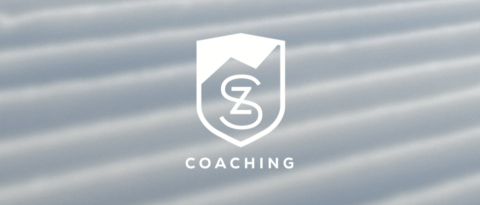Ski Recovery Techniques
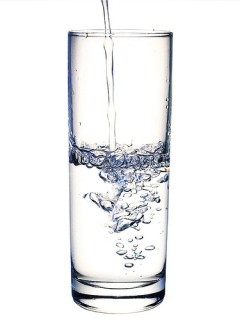
Ski Recovery Techniques for better performances
Ski Recovery or Training?
Training is key to success in any sport, and hours of practice are the very essence of improvement, without which no results can be attained. But.
Efficient recovery time will therefore enable the performer to spend more time accumulating those precious hours of training and ultimately achieve a better result in a shorter space of time.
Active and Passive Ski Recovery
Generally speaking, rest is the amount of time spent between training sessions. How we spend this time is related to our lifestyle and also related to our level in the sport we are performing in. Professional athletes will generally spend less time having to worry about other things than the sport, as it is their profession already.
Amateur athletes will have less time for “themselves” between one training session and the next, having to work and run a “normal life” next to the training, making the time spent in recovery therefore more valuable.
Recovery can be split into two groups: active and passive:
- Passive Recovery is the time spent at rest, not training and not doing anything physically demanding. During this time our body goes back to homeostasis, a state where the body maintains “internal stability”. Tissue is repaired and all the normal processes of the body stay at the resting rate of the individual’s metabolism.
- Active recovery is time spent resting, but doing an activity.
Rather than sending the body back to its basic metabolism level, where recovery processes do occur, but at a relatively slow pace, physical activity is performed in order to raise the metabolism and make the repairing processes take place more quickly.This case is more complex than Passive Recovery, since the activity, whatever that is, needs to be tailored to the athlete’s level, age, experience, current condition, time of the year/training block etc.
It needs to be at the right intensity and duration, in order to allow the right metabolic responses to take place and not get delayed by doing the active recovery itself; if the activity is too intense, for example, the body will concentrate on the performance (muscle contraction) and will leave the repairing jobs to any energy left over (rebuilding muscle, energy supplementation, detox actions etc).
If the activity is too light, on the other hand, the metabolism isn’t greatly affected and therefore no great advantages are gained.
The key is then to be able to find a selection of activities or methods that helps the body recover more quickly but without becoming too tired.
Tailored Recovery Strategy
Therefore, to enable each individual to maximize the quantity and quality of the hours spent on training, Your ski recovery needs to be efficient, organised and targeted.
The truth is, recovery is a subject as important as training. Numerous books (and debates) have been written (and discussed) on the subject.
Additionally, successful training plans are always determined by the combined results of experience in the field, personal education and a detailed knowledge of the trained athletes.
It can be difficult to give the most precise and correct advice through an online article, but what follows here are a few tips that are widely used in sport and can be useful to have as basic knowledge.
All of them have been used with success in a number of athletes that I had the opportunity to work with in the past, both at the professional and amateur levels.
Some require a certain degree of personal guidance, other can be tried straightaway.

Hydration for ski recovery
Stating the obvious here: Water is the only way for your body to transport nutritive elements to your muscles. As well as carring away waste, produced by workout itself and the day to day life.
Dehydrated bodies can’t recover as well as hydrated ones. We’re not talking about mineral presence here, but water itself. So drink water any chance you get.
For more in-depth information on hydration you can take a look at our article on the subject.
Diet
Training at a high intensity inflames the body tissue, throughout the whole body including all the muscles, tendons and joints.
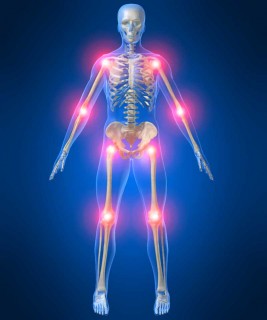
It is normal for the body to go through a state of inflammation and the body is also well equipped to deal with it.
However, we can help the process by following a diet that reduces inflammation.
And, funnily enough, overfeeding is not the correct approach to a sports diet!
Your diet should fundamentally consist of fruit, vegetables and non-processed food in general. Meat, dairy products, alcohol, coffee and processed food have the tendency to create inflammatory reactions and should be kept under control.
(An article on this subject is coming out soon).
Supplements and Drugs
Nowadays pharmaceutical drugs, such as anti-inflammatories and pain-killers, are often used to improve recovery. Very often they represent the first go-to solution for small or large issues. Unfortunately most products work against us, by reversing the inflammation stages that our body would otherwise naturally go through to solve the problem.
Drugs should be recommended and used only under a specific medical prescription.
Supplements work in a similar way; because they are not drugs they are more generally used in order to get that extra bit of performance out the body. However, once again they should be used following advice from a Sport Nutritionist .
A small side note: the majority of supplements are actually based on the placebo effect, not on proven scientific facts.
Feet Up
Especially in anaerobic lactacid sports (like skiing, weight lifting, 400-800 meters sprinters etc) a large amount of fluids and blood gets clogged up in the legs after the workout.
Being able to help the natural outflow of the these fluids will shorten the recovery time of the legs, removing the inflammation and restoring the natural balance in the body.
The Exercise
Lie on the floor, with the gluteus close to a wall and the feet up against it. Put your heels close together and your back fully in contact with the wall.
This is a simple way to obtain good results in 10-15 minutes.
This can also be used as a very effective stretching exercises for all the muscle of the Posterior Kinetic Chain, as well as part of a routine to release pressure from the lower back in case of a Pelvic Tilt.
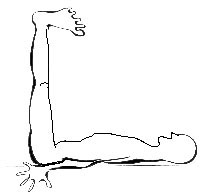
Compression in skiing and ski recovery
Compression clothing has been used for years to increase performance in athletes. While there are different opinions amongst pros on the actual improvement during the race/workout, it is generally agreed that wearing compression clothes after the perfomance helps the recovery.
It is based on a simple mechanism: holding the muscles in place firmly in turn supports the blood vessels and aids the restoration of normal blood pressure and liquid’s drainage.
Some athletes wear them while they sleep, other for a few hours after the workout, specially during low heart rate activities (walking, cycling or even running errands).
It is essential for these clothes to be of the right size and quality. The sizing is in cm/inches so before buying a set, make sure you know the size and circumference of all your limbs!
![]()
Light Cardio
The most common activities here are walking, cycling and running. Fairly easy to perform in any conditions and with minimum equipment.
Obviously the chosen activity needs to be at the right pace and with the correct technique. Running is the perfect example. Many people run, but not many have gone through the process of learning the technique, with or without a coach.
Additionally, soft impact activities are always preferable to hard impact. Running, again, would be ideal on soft grass, less so on concrete or tarmac.
Stretching
It’s proven to help the body to react positively towards recovery. It opens up the circulatory system, allowing nutrients to flow better, and brings relief to the joints, decompressing them from the tensions of the workout.
Not all stretching positions and techniques work the same for everyone, especially if you suffer from bad posture. Professional advice can help choosing the right kind of stretch and will save you time (we all know how boring stretching can be..).
Hot-Cold
There is an impressive amount of literature on the benefit of cold or hot therapy in recovery. 
Generally cold therapy can be used to limit the inflammation, especially in joints; knees, ankles, shoulders, wrists and elbows are probably the ones that benefit the most. Hold the ice (or the cold water) in place only for a limited amount of time, possibly going for an on-off technique (5 min on, 3 min off for example) repeated a few times.
Hot baths have been used for decades to improve peripheral circulation, stimulating blood overflow. Again, 15 minutes at max in a hot bath will do the job.
Baths and ice can be also combined. For example taking a bath first to stimulate the general circulation then applying ice on the joint to “cool down” the local inflammation.
Massages
All professional athletes in any sport always ensure they have access to a good masseur.
Manual therapy is the most widely used technique to help recovery from fatigue.
You can work on specific areas with specific movements which are pretty much impossible to substitute with any device.
work on specific areas with specific movements which are pretty much impossible to substitute with any device.
It’s unfortunate since treatments can be expensive especially if required frequently.
However foam rollers and tennis balls can actually be a good partial substitute.
Like any other tools it’s best to learn how to use them first. It will just save time and pain.
It’s worth making a separate point for persistant localized pain:
Whether it is a joint or a muscle, regular, localized pain can be the sign of either bad training, bad technique, bad posture or serious damage (muscle tear, tendon tear or joint deterioration).
These issues should not be underestimated.
Additionally, we should remember that training is not racing.
You can power through pain in a race, but you shouldn’t power through it in training time. Training time is there to improve your condition, not to damage your body.
The advice of a professional is really the only right decision here, even if (and in particular if) the advice is to take a step back and rest more.
Conclusions
All the above recovery techniques can be used as a single treatment or, even better, combined with each other.
Some people react differently to different approaches, so at first it could be worth trying them all, on different days, to see what reaction you get.
Ideally, like in any other experiment, you would have the same workout before each recovery technique, so the result can be compared objectively.
Accurate feedback is often the only thing that we can rely on, in choosing one over the other.
While time can’t be bought, experience can be (to some extent).
A good physio or coach, with the right specific experience, can be of some help in the tailoring of treatment.
About Us
Subzero Coaching is a company dedicated to ski instructor education and coaches development. Based in Zermatt, Switzerland, where we run season long courses, we also deliver training camps across Europe year round.
Understanding how the industry works and trying to foresee the changes we challenge ourselves to stay ahead of the curve. 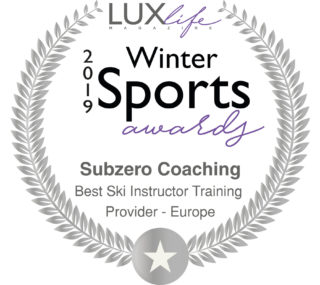
All our long term courses, it being those to become a ski instructor, our ISIA Level 3 or our Level 4 courses include a variety of subjects, not just on-snow training. From Fitness support to second language classes, avalanche safety, seminars on customer care, nutrition, biomechanics.
The on snow training also covers multiple disciplines (telemark, snowboard, adaptive) as well as Coaching Pathways opportunities in Freestyle and Alpine Racing.
Last but not least, year round
race training camps!
Always there, at every level. Elevating Performance.
The Subzero Coaching Team
